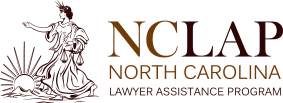Men and women with alcohol use disorders (AUDs) are 18 times more likely to report nonmedical use of prescription drugs (NMUPD) than people who don’t drink at all, according to researchers at the University of Michigan. The link was documented by the National Institute on Drug Abuse (NIDA).
The National Epidemiologic Survey on Alcohol and Related Conditions (NESARC), sponsored by the National Institutes of Health, defines nonmedical use as “Using drugs that were not prescribed to you by a doctor, or using drugs in a manner not intended by the prescribing clinician (e.g., to get high). Nonmedical use does not include taking prescription medications as directed by a health practitioner or the use of over the- counter medications.”
The researchers found that the more alcohol a person drank and the younger he or she started drinking, the more likely he or she was to report NMUPD. Compared with people who did not drink at all, drinkers who did not binge were almost twice as likely to engage in NMUPD; binge drinkers with no AUDs were three times as likely; people who abused alcohol but were not dependent on alcohol were nearly seven times as likely; and people who were dependent on alcohol were 18 times as likely to report NMUPD.
The prescription drugs that were combined with alcohol in order of prevalence included prescription opiates (e.g., Vicodin, OxyContin), stimulant medication (e.g., Ritalin, Adderall), sedative/anxiety medication (e.g., Ativan, Xanax), and sleeping medication (e.g., Ambien, Halcion). The college study asked about the respondent’s use of medications prescribed for other people while the NESARC explored both use of someone else’s prescription medications as well as the use of one’s own prescription medications in a manner not intended by the prescribing clinician.
When alcohol and prescription drugs are used simultaneously, severe medical problems can result, including alcohol poisoning, unconsciousness, respiratory depression, and sometimes death.
The study emphasized that many people who simultaneously drink alcohol and use prescription medications have no idea how dangerous the interactions between these substances can be.
“The problem,” according to Dr. James Colliver, formerly of NIDA’s Division of Epidemiology, Services, and Prevention Research, “is that many people think that, because prescription drugs have been tested and approved by the Food and Drug Administration, they are always safe to use; but they are safe only when used under the direction of a physician for the purpose for which they are prescribed.”
Sources
National Institute of Drug Abuse, Drug and Alcohol Dependence, Journal of Studies on Alcohol
Tags: alcohol, prescription drugs Posted by
